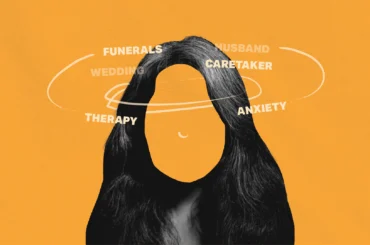As friendship dynamics shift in midlife, we learn to redefine what it means to ‘show up.’ This article explores how to move from high-energy activities to emotional investment, from shared experiences to shared values, and from surface-level interest to profound intention, building deeper, more authentic connections.
When your friendship dynamics have changed, the question becomes: how do you show up for your friends in your 40s and 50s? The act of showing up isn’t just about being physically present, it’s about fundamentally reimagining what authentic connection looks like at this stage of life.
Let’s face it: life gets complicated. Between career demands, family responsibilities, aging parents, and personal transitions, it can feel like there’s barely enough time to catch your breath, let alone nurture friendships. But as we go through the complexities of midlife, the importance of authentic social connections becomes not just apparent, but essential.
Energy vs. emotion: A new investment strategy
In my younger years, I invested energy in my friendships. I had the stamina for late nights, weekend adventures, and constant communication. I showed up by doing, planning trips, organizing gatherings, and maintaining a busy social calendar.
Now, my energy is finite and precious. But what I have in abundance is emotional depth, hard-won wisdom, and the capacity for profound understanding. Showing up in midlife means investing my emotions rather than my energy. It’s about bringing my full heart to fewer interactions rather than spreading myself thin across many.
This looks like choosing quality conversations over quantity of contact. It means showing up emotionally present during a 30-minute coffee rather than physically present but distracted during a three-hour event. When I invest emotions, my attention, empathy, and authentic self, even brief encounters become deeply meaningful.
Shared experiences vs. shared values: The foundational shift
I used to bond over shared experiences–the concerts I attended with friends, the trips we took together, the adventures we pursued. These experiences created memories and stories that bound us together.
In midlife, I’ve found that my strongest friendships are built on shared values rather than shared experiences. I connect with friends who share my approach to parenting, my perspective on what makes life meaningful, or my dedication to personal growth.
Showing up now means being willing to have conversations about what truly matters to me.
Interest vs. intention: The quality of attention
Earlier in life, we showed up with interest, curious about what our friends were doing, eager to hear about their latest adventures, ready to share our own exciting news. Interest is wonderful, but it often stays on the surface.
Midlife friendship requires intention, a deliberate choice to truly see and understand your friends. Intentional showing up means asking follow-up questions about things that matter to them months later. It means remembering their struggles and checking in without being asked. It means offering support that’s specific to their situation rather than generic encouragement.
When you show up with intention, you’re not just interested in your friend’s life, you’re invested in their wellbeing and growth as a human being.
Shared closets vs. sharing skeletons: The depth of vulnerability
In our younger years, we shared closets, literally and metaphorically. We borrowed each other’s clothes, shared makeup tips, compared dating stories, and bonded over surface-level commonalities. The intimacy was real but often centered around external things we had in common.
Midlife friendship dynamics requires a different kind of sharing: the willingness to reveal the skeletons in our cupboards. These are the deeper truths we’ve learned about ourselves, our failures, our regrets, our struggles with parenting, marriage, career disappointments, or personal limitations. It’s sharing the parts of ourselves we’ve worked hard to understand and accept.
Showing up in midlife means being willing to share not just what you have, but who you really are, including the parts that aren’t pretty or perfect. It means admitting when you’ve been wrong, sharing your genuine fears about aging or loss, or revealing how you’ve changed in ways that might surprise your old friends.
High point vs. low point: Showing up when it matters most
We’re conditioned to think that showing up means being there for celebrations, birthdays, promotions, achievements. And yes, celebrating high points with friends is important and joyful.
But midlife teaches us that showing up for the low points is what truly defines the friendship dynamics. This is when people need emotional investment most, when shared values become a lifeline, and when intentional presence can make all the difference.
Showing up for low points doesn’t require grand gestures. It might mean:
- Sitting with a friend through a difficult decision without trying to fix it
- Checking in during the anniversary of a loss
- Being available during the messy middle of life transitions
- Offering practical help during family crises
- Simply witnessing someone’s struggle without judgment.
You don’t need to be available all the time, or have endless energy for social activities. Or even need to chase new experiences together.
You just need to show up, emotionally, intentionally, and authentically – for the relationships that truly matter. And letting go of things (and people) that don’t. In doing so, you create friendships that don’t just survive the complexities of midlife, but are strengthened by them.





